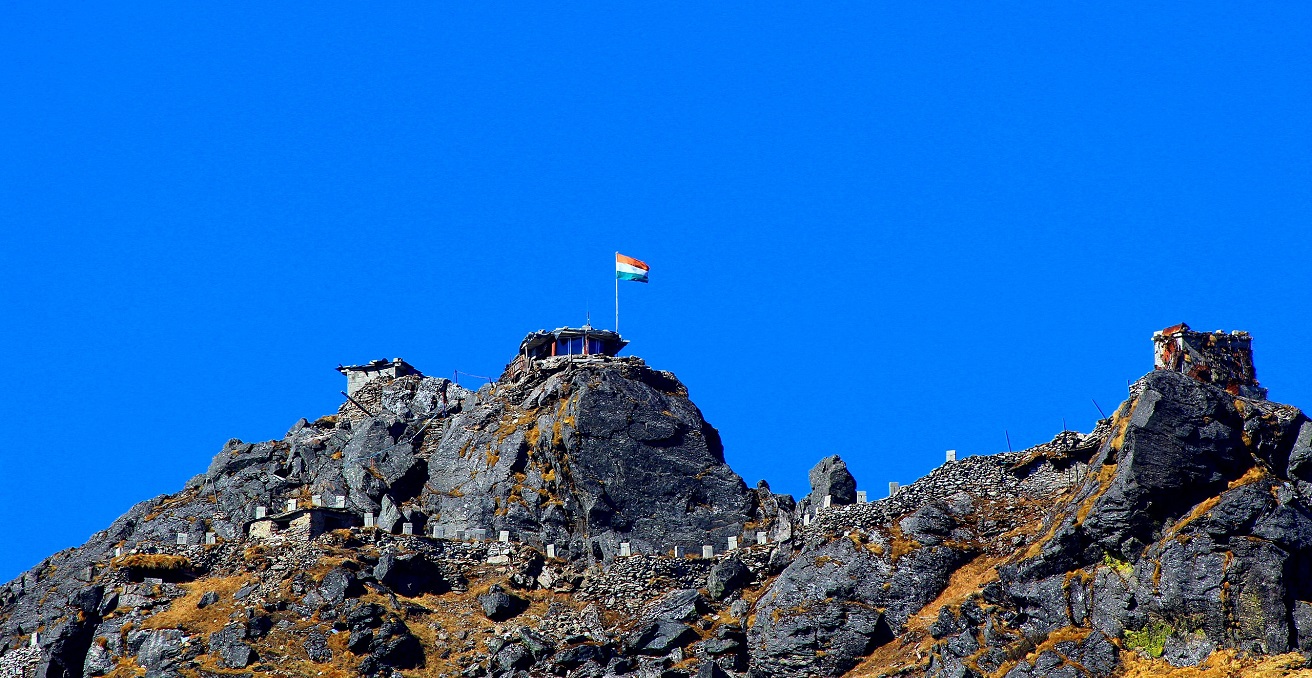Dialogue is the Only Option to Counterbalance China’s Ambitions on the Himalayas

China has adopted a “salami slicing” tactic on the Himalaya, while New Delhi has adopted a tit-for-tat strategy to resist Beijing’s ambitions. A stable border equilibrium will occur when the two countries align their views on the legitimacy of the Line of Actual Control.
About one year ago, China and India found themselves embedded in what has been broadly recognised as the “the most serious face-off on the world’s longest unsettled land border in nearly half a century.” A confrontation in the Galwan Valley, on the Line of Actual Control (LAC) in Ladakh, has left about 20 Indian and four Chinese soldiers dead. One year later, this sudden escalation that back then took many by surprise can be more clearly understood as part of a bigger plan launched to alter the existing “shi” (势 in Chinese) on the Himalaya and serve Xi Jinping and China’s long-term geopolitical ambitions.
China’s strategic ambitions in South Asia are not new, and it is a matter of fact that bilateral relationships between Beijing and New Delhi have significantly deteriorated since the rapprochement that was marked by Indian status in the Asian Infrastructure and Investment Bank (AIIB). India is the second-largest shareholder after China, and New Delhi has received so far up to 20 percent of the total founding distributed by the AIIB, including a $750 million loan for COVID-19 assistance in June 2020. India is one of the toughest opponents of the Belt and Road Initiative, especially the China-Pakistan Economic Corridor, and its anti-China rhetoric has dramatically escalated over the last few years. The Indian confrontational approach was further exacerbated in November 2020, when Prime Minister Narendra Modi stepped back from the Regional Comprehensive Economic Partnership (RCEP) to better protect Indian economic interests, and again in May 2021, when the country formally confirmed its intention to exclude Chinese manufacturers from its fifth-generation, or 5G, wireless network trials.
Despite this profound mistrust, what the Indian leadership initially missed (together with the majority of the global community of Indian observers) has been the inner significance China’s active work on the margins to “better consolidate” its position on the Himalayas. According to Professor Brahma Chellaney, Prime Minister Narendra Modi “was the first who failed to foresee the aggression coming largely because he was focused on befriending China.” However, the Galwan Valley crisis was the very first stand-off that marked a turning point on LAC confrontations, eventually proving India that China’s attitude all along the border had drastically, and irreversibly, changed.
Let’s look at the context first. China has a clear interest in consolidating its position on the Himalaya. The region of Ladakh is crucial to connect Xinjiang with western Tibet, while the territory of Sikkim is essential to isolate Indian eastern states and give Beijing the chance to dream about extending its Tibetan outreach beyond the Arunachal Pradesh.
In the fifth chapter of The Art of War, entitled “Shi” (often translated as “Energy”), the famous Chinese general and military strategist Sun-Tzu argues: “The clever combatant looks to the effect of combined shi… the shi (or energy) developed by good fighting men is as the momentum of a round stone rolled down a mountain thousands of feet in height.” It does not require too much creativity to imagine how much momentum a giant stone rolled down a mountain of tens of thousands of feet may carry.
Beijing has learned how to extend its control over new territories by avoiding the direct employment of force to recur to asymmetrical and hybrid warfare. In the current stand-off with India, as it is the case for all other conflicting scenario, the best option for China remains the one of following Sun Tzu’s favoured method: winning without fighting.
The Galwan Valley crisis has been the very first of a long series of China’s intrusions beyond the LAC. Despite the never-ending rounds of negotiations aimed at finding a new temporary agreement, Modi discovered towards the end of 2020, thanks to a series of aerial pictures taken by the US-based satellite company Maxar Technologies that China had built a village and military storage bunkers in Doklam. A few months later, when “thawing ice reopened access routes after the brutal Himalayan winter, a shocked India discovered that the People’s Liberation Army had occupied hundreds of sq. kilometers of the borderlands, fortified by heavily armed bases.” In May, the People’s Liberation Army decided to carry out an exercise in their depth areas near the Eastern Ladakh sector, and China has been accused of diverting from its traditional exercise areas to penetrate up to 100km and beyond into the Indian territory. However, although “there was hope that the Chinese would go back to their original locations,” it seems that PLAs units have remained at forward locations since then.
Professor Swaran Singh has summarized the issue at stake very clearly: “If history has any lesson to these ancient civilizations, it’s a combination of historical events, structural shifts, and bold initiatives that can help rectify a new stability in China-India ties” and, for this reason, demarcation, and delimitation of the border needs to stop being viewed as a “faraway” and unreachable objective.
Although it is true that “China and India working together remains a prerequisite for building a shared future of humankind,” we are now running the risk of seeing China further maximising its “shi” on the Himalaya.
To understand Indian difficulty to find an effective strategy to counterbalance Chinese ambitions on the border it is important to remind how intertwined the Chinese and the Indian economies are. “China’s share in Indian imports for intermediate goods, capital goods, and final consumer goods is 12 percent, 30 percent, and 26 percent espectively,” and since New Delhi is importing from Beijing much more than vice versa (China accounted for 5 percent of India’s exports and 14 percent of India’s imports in 2019), the former has accumulated an impressive trade deficit vis-à-vis the latter (US$ 56.77 billion in 2019). Despite the most recent anti-China economic and strategic moves, Beijing remains India’s biggest trade partner. The COVID-19 pandemic has further exacerbated this dependence, and New Delhi reluctance to accept China’s help during the sanitary crises can confirm two trends: first, India is very far away from being economically independent, and bilateral cooperation with China remains essential for the country. Second, China has been capable of seizing the right moment to further advance its strategic position in the Himalaya in the middle of the global sanitary crisis, a detail that further proves Xi Jinping’s determination to affirm his understanding of the exact location of the frontier on the Himalaya.
In this context, it is becoming harder and harder to identify a compromise that could be mutually acceptable. For this reason, the only option left is the one of relaunching a realistic dialogue to settle once and for all the China-India border dispute. If this option will not be considered, China will go on with its “salami slicing” tactic, while India, by refusing to compromise on the LAC, might lose even more time end eventually find itself compelled to go back to bilateral negotiation with a further weakened position.
Claudia Astarita is lecturer at Sciences Po Lyon and researcher at the Lyon Institute of East Asian Studies (IAO). She is also an associate Fellow at the Asia Institute, the University of Melbourne, and International Relations Analyst for South Asia at CeMiSS, Centre for Military and Strategic Studies, in Rome. She obtained her Ph.D. in Asian Studies from Hong Kong University in early 2010. Her main research interests include China’s political and economic development, Chinese and Indian Foreign policies, East Asian regionalism and regional economic integration, Asian Civil Society, and the role of media and memory (both official and unofficial) in reshaping historical narratives in Asia.
This article is published under a Creative Commons License and may be republished with attribution.





